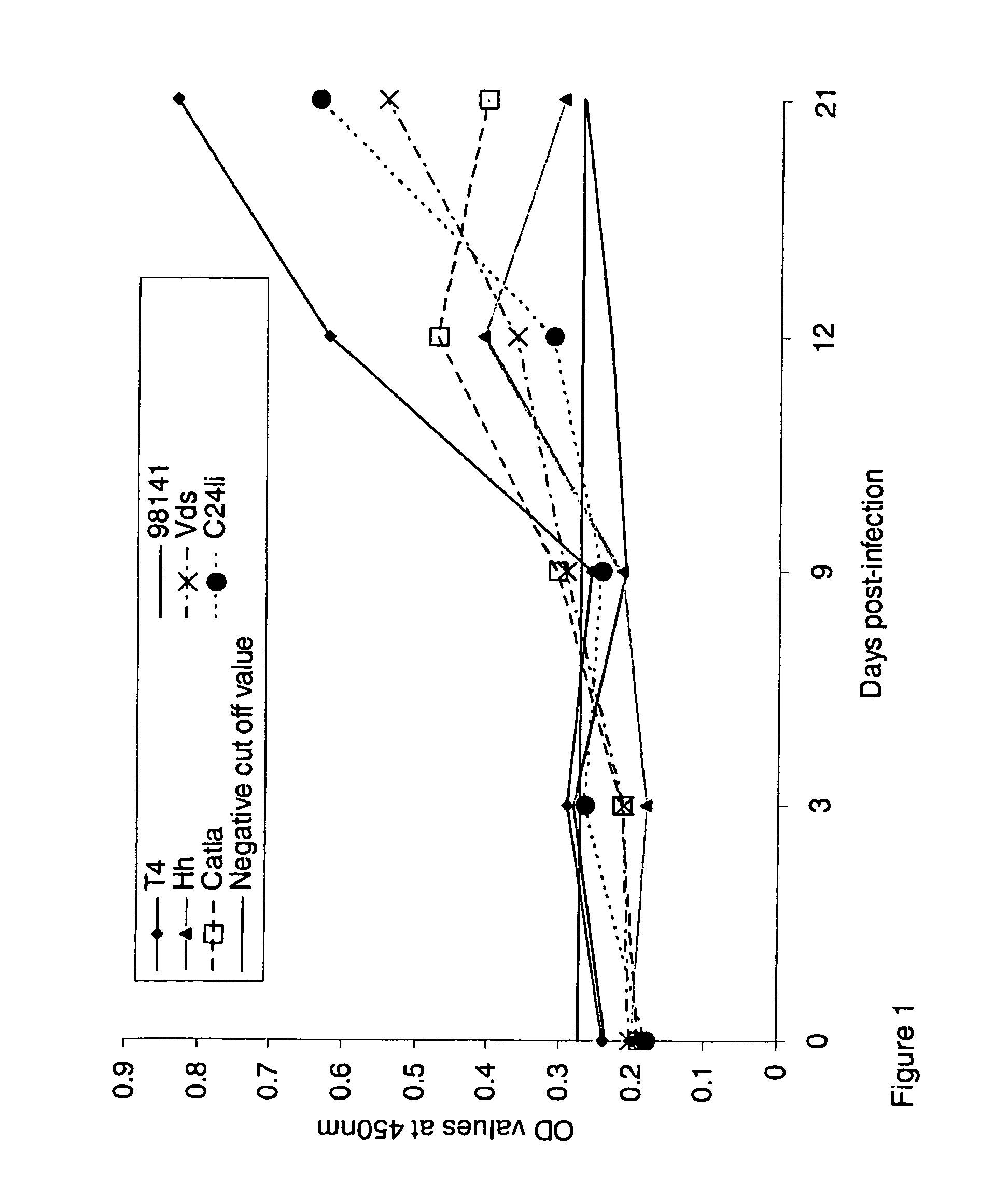Vaccine
a technology of aeromonas hydrophila and vaccine, applied in the field of vaccine, can solve the problem that no commercial vaccine is available for i>a, and achieve the effects of facilitating uptake of 50 kda protein, broad protection, and preventing infection by other sources
- Summary
- Abstract
- Description
- Claims
- Application Information
AI Technical Summary
Benefits of technology
Problems solved by technology
Method used
Image
Examples
Embodiment Construction
[0067]The present invention will now be further described by way of example and with reference to the Figures which show:
[0068]FIG. 1: Antibody response of common carp against different isolates of A. hydrophila determined by ELISA expressed as an absorbance at 450 nm. All sera were diluted 1:512.
[0069]FIG. 2: Western blot analysis of different whole cell preparations of A. hydrophila against pooled serum from common carp infected with 6 different A. hydrophila isolates. Lanes: (1) Standard marker; (2) T4; (3) 98141; (4) Hh; (5) Vds; (6) Catla; (7) C24li; (8) 2D20; (9) 3D14; (10) 2N14; (11) 98140; (12) 98139; (13) B2 / 12; (14) Fld75; (15) Calf.
[0070]FIG. 3: Western blot analysis of different preparations of 6 A. hydrophila isolates screened with serum raised against corresponding A. hydrophila isolates in common carp. (A) T4, (B) 98141, (C) Hh, (D) Vds, (E) Catla, (F) C24li. Lanes: (1) Standard marker; (2) WC in vitro; (3) WC in vivo 25 kDa; (4) WC in vivo 100 kDa; (5) OMP in vitro; ...
PUM
| Property | Measurement | Unit |
|---|---|---|
| molecular weight | aaaaa | aaaaa |
| pH | aaaaa | aaaaa |
| concentration | aaaaa | aaaaa |
Abstract
Description
Claims
Application Information
 Login to View More
Login to View More - R&D
- Intellectual Property
- Life Sciences
- Materials
- Tech Scout
- Unparalleled Data Quality
- Higher Quality Content
- 60% Fewer Hallucinations
Browse by: Latest US Patents, China's latest patents, Technical Efficacy Thesaurus, Application Domain, Technology Topic, Popular Technical Reports.
© 2025 PatSnap. All rights reserved.Legal|Privacy policy|Modern Slavery Act Transparency Statement|Sitemap|About US| Contact US: help@patsnap.com



